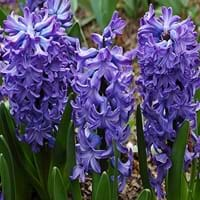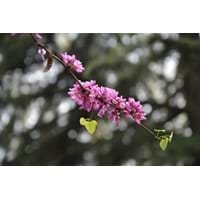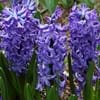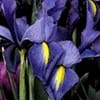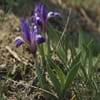Life Span
Perennial
Perennial
Type
Bulb or Corm or Tuber
Tree
Origin
Mediterranean, Western Asia
Southern Europe
Types
Not Available
Not Available
Habitat
Mediterranean region
Lower slopes, Semi arid regions
USDA Hardiness Zone
4-9
6-9
AHS Heat Zone
9-1
Not Available
Sunset Zone
21,22
Not Available
Habit
Clump-Forming
Oval or Rounded
Flower Color
White, Yellow, Red, Blue, Purple, Pink, Lavender, Violet
Light Purple, Pink, White
Flower Color Modifier
Bicolor
Bicolor
Fruit Color
Not Available
Brown
Leaf Color in Spring
Green
Green, Dark Green
Leaf Color in Summer
Light Green
Green, Dark Green
Leaf Color in Fall
Several shades of Green
Green, Dark Green
Leaf Color in Winter
Light Green
Light Green
Leaf Shape
Long slender
Heart-shaped
Plant Season
Spring, Winter
Spring, Summer, Fall, Winter
Sunlight
Full Sun, Partial Sun
Full Sun, Partial Sun
Growth Rate
Medium
Medium
Type of Soil
Loam
Clay, Loam, Sand
The pH of Soil
Acidic, Neutral
Acidic, Neutral
Soil Drainage
Well drained
Well drained
Bloom Time
Early Spring, Spring, Late Winter, Indeterminate
Spring, Late Spring
Tolerances
Black Walnut Toxicity, Rabbit, Shade areas
Drought
Where to Plant?
Container, Ground, Pot
Ground
How to Plant?
chipping, Offsets, scooping, Twin scaling, Vegetative
Seedlings, Stem Cutting
Plant Maintenance
Low
Medium
Watering Requirements
Medium
Average Water Needs
In Summer
Lots of watering
Lots of watering
In Spring
Moderate
Moderate
In Winter
Average Water
Average Water
Soil pH
Acidic, Neutral
Acidic, Neutral
Soil Type
Loam
Loam, Sand
Soil Drainage Capacity
Well drained
Well drained
Sun Exposure
Full Sun, Partial Sun
Full Sun, Partial Sun
Pruning
Remove damaged leaves, Remove dead branches, Remove dead leaves
Remove damaged leaves, Remove dead branches, Remove dead leaves
Fertilizers
All-Purpose Liquid Fertilizer, General garden fertilizer, Time release fertilizer
All-Purpose Liquid Fertilizer
Pests and Diseases
Pests and diseases free
Coral Spot, Red blotch, Verticillium Wilt
Plant Tolerance
Black Walnut Toxicity, Rabbit, Shade areas
Drought
Flower Petal Number
Single, Double, Semi-Double
Single
Fragrant Bark/Stem
No
Yes
Foliage Texture
Medium
Medium
Foliage Sheen
Glossy
Glossy
Attracts
Insects
Birds, Butterflies
Allergy
Asthma
Not Available
Aesthetic Uses
Beautification, Bouquets, Cottage Garden, Landscape Designing, Showy Purposes
Beautification, Ornamental use, Showy Purposes
Beauty Benefits
Not Available
Not Available
Environmental Uses
Not Available
Air purification
Medicinal Uses
Not Available
Not Available
Part of Plant Used
Flowers
Flowers, Wood
Other Uses
Decoration Purposes, Showy Purposes
Condiment, Used as Ornamental plant, Used for woodware
Used As Indoor Plant
Yes
Yes
Used As Outdoor Plant
Yes
Yes
Garden Design
Bedding Plant, Container, Cutflower, Mixed Border, Rock Garden / Wall
Container, Edible, Feature Plant
Botanical Name
Hyacinthus orientalis
Cercis siliquastrum
Common Name
Hyacinth, common hyacinth, garden hyacinth, dutch hyacinth
Judas Tree
In German
Hyazinthe
Judasbaum
In French
jacinthe
Judas arbre
In Spanish
jacinto
Árbol de Judas
In Greek
υάκινθος
Ο Ιούδας δέντρο
In Portuguese
jacinto
Árvore de Judas
In Polish
hiacynt
Judasz Drzewo
In Latin
et hyacinthinas,
Iudas ligno
Phylum
Magnoliophyta
Magnoliophyta
Class
Liliopsida
Magnoliopsida
Family
Liliaceae
Fabaceae
Clade
Angiosperms, Monocots
Angiosperms, Eudicots, Rosids
Tribe
Not Available
Cercideae
Subfamily
Scilloideae
Caesalpinioideae
Difference Between Hyacinth and Judas Tree
If you are confused whether Hyacinth or Judas Tree are same, here are some features about those plants to help you choose better. Many people think that these two plants have the same characteristics, but one can see Hyacinth and Judas Tree Information and learn more about it. Fertilizers required for proper growth of Hyacinth are All-Purpose Liquid Fertilizer, General garden fertilizer and Time release fertilizer, whereas for Judas Tree fertilizers required are All-Purpose Liquid Fertilizer. Hence, one should know the basic difference between Hyacinth and Judas Tree if you are planning to have them in your garden to enhance its beauty.
<
Flowering PlantsImportance of Hyacinth and Judas Tree
Want to have the most appropriate plant for your garden? You might want to know the importance of Hyacinth and Judas Tree. Basically, these two plants vary in many aspects. Compare Hyacinth and Judas Tree as they differ in many characteristics such as their life, care, benefits, facts, etc. Every gardener must at least have the slightest clue about the plants he wants to plant in his garden. Compare their benefits, which differ in many ways like facts and uses. The medicinal use of Hyacinth is Not Available whereas of Judas Tree is Not Available. Hyacinth has beauty benefits as follows: Not Available while Judas Tree has beauty benefits as follows: Not Available.
Compare Facts of Hyacinth vs Judas Tree
How to choose the best garden plant for your garden depending upon its facts? Here garden plant comparison will help you to solve this query. Compare the facts of Hyacinth vs Judas Tree and know which one to choose. As garden plants have benefits and other uses, allergy is also a major drawback of plants for some people. Allergic reactions of Hyacinth are Asthma whereas of Judas Tree have Not Available respectively. Having a fruit bearing plant in your garden can be a plus point of your garden. Hyacinth has no showy fruits and Judas Tree has showy fruits. Also Hyacinth is not flowering and Judas Tree is not flowering . You can compare Hyacinth and Judas Tree facts and facts of other plants too.
